Mehrere Kältetote in Europa
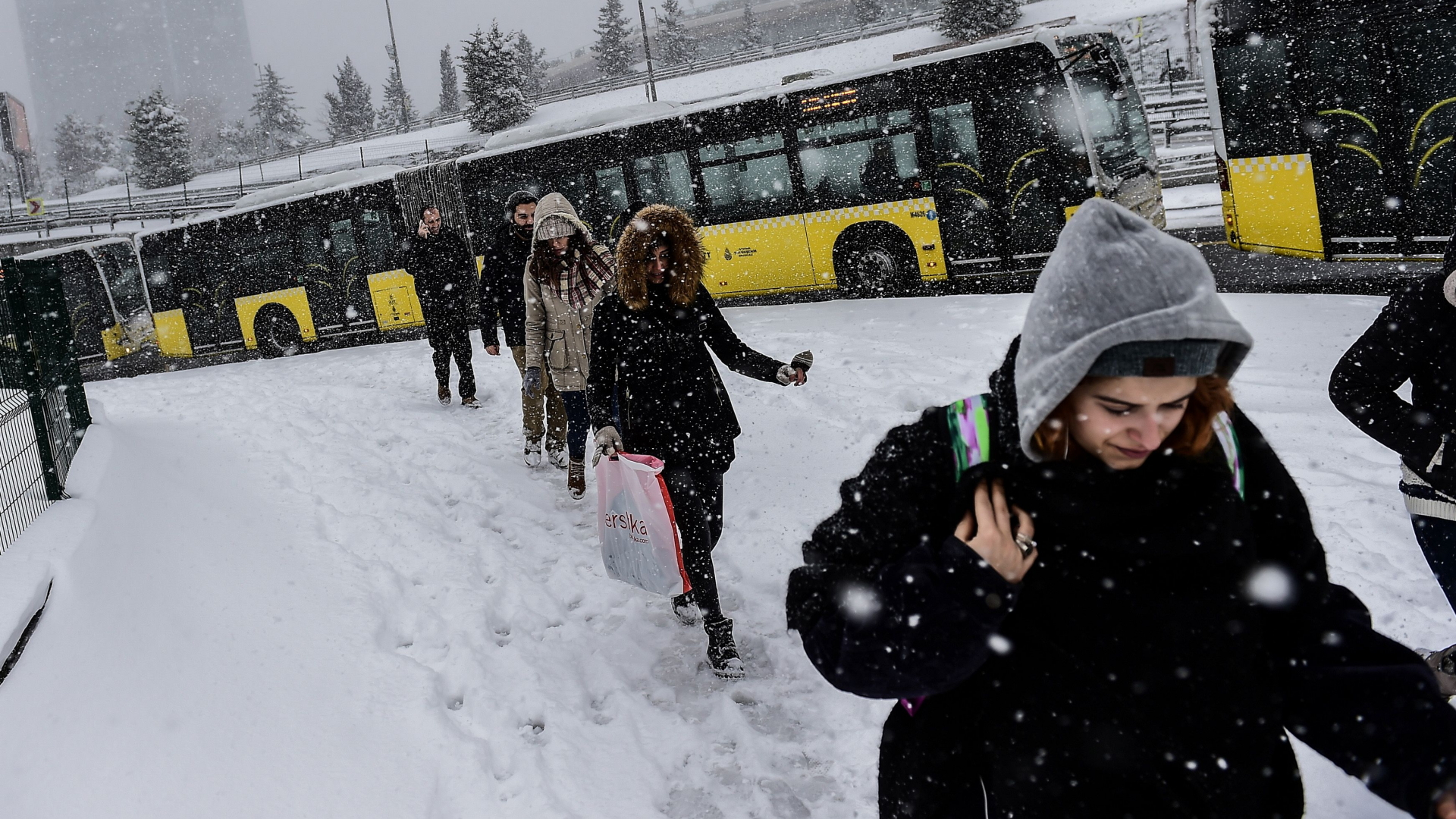 Wegen der anhaltenden Kältewelle sind in mehreren Ländern Europas Menschen erfroren. Allein in Italien und Polen starben in den vergangenen zwei Tagen 17 Menschen. In Teilen Deutschlands kämpfen die Menschen vor allem mit extremer Glätte.
Wegen der anhaltenden Kältewelle sind in mehreren Ländern Europas Menschen erfroren. Allein in Italien und Polen starben in den vergangenen zwei Tagen 17 Menschen. In Teilen Deutschlands kämpfen die Menschen vor allem mit extremer Glätte.
Eine Kältewelle hat Europa weiter fest im Griff: Viele Länder melden Kälterekorde, selbst auf Sizilien und in Istanbul schneite es heftig. Allein in Polen und Italien erfroren binnen zwei Tagen 17 Menschen, weitere Kältetote gab es unter anderem in Bulgarien und Russland. Die Kälte dürfte noch bis Sonntag anhalten. Verantwortlich für den Kälteeinbruch ist nach Angaben von Meteorologen aus Skandinavien kommende eiskalte Polarluft.
In Polen starben nach Angaben der Behörden zehn Menschen am Donnerstag und Freitag an Unterkühlung. In einigen Regionen lagen die Temperaturen bei minus 20 Grad. Die Behörden rechneten mit weiteren Opfern am Wochenende. Italiens Regierung meldete bis Samstag sieben Kälteopfer. Die meisten von ihnen waren Obdachlose, die trotz einer Reihe von Maßnahmen für ihre Unterbringung erfroren waren.
Im südlichen Apulien mussten die beiden Flughäfen wegen Schnees am Morgen den Betrieb einstellen. In den Abruzzen, wo es im August und Oktober zwei schwere Erdbeben gegeben hatte, wurden minus zehn Grad gemessen.
In Deutschland sorgt extreme Glätte für Probleme: Der Deutsche Wetterdienst warnte am Samstag vor «unwetterartiger Glatteisbildung» in Nordrhein-Westfalen und Unwettergefahren durch Glatteis auch im Nordwesten.
Besonders kalt ist es derzeit auch in der russischen Hauptstadt. So feierte Moskau nach Angaben der Nachrichtenagentur RIA Nowosti die kältesten orthodoxen Weihnachten seit 120 Jahren. Dort zeigte das Thermometer rund minus 30 Grad an. In Sankt Petersburg entdeckte die Polizei die Leiche eines Mannes, der in der Nacht erfroren war.
Heftiger Schneefall brachte den Verkehr in Istanbul teilweise zum Erliegen. An den beiden internationalen Flughäfen wurden Hunderte Flüge gestrichen, die Küstenwache stoppte den Fährverkehr in der Bosporus-Meerenge, die den europäischen mit dem asiatischen Teil der türkischen Millionenmetropole verbindet. Weite Teile der Stadt lagen am Samstag unter einer bis zu 40 Zentimeter hohen Schneedecke.
Im benachbarten Bulgarien fanden Dorfbewohner erneut die Leichen zweier erfrorener Flüchtlinge. Die beiden 28 und 35 Jahre alten Iraker lagen in einem verschneiten Wald nahe des Grenzabschnitts, der nicht durch Stacheldraht abgeriegelt ist. In derselben Gegend war am Montag eine Frau aus Somalia tot aufgefunden worden. In Griechenland war am Dienstag die Leiche eines 20-jährigen Afghanen entdeckt worden, der zuvor die türkisch-griechische Grenze überwunden hatte. Dort lagen die Temperaturen zwischen Null Grad in Athen und minus 15 Grad im Norden des Landes.
Die Balkanstaaten meldeten Temperaturen von bis zu 27 Grad Minus. Selbst in der kroatischen Hafenstadt Split lagen sie nach Angaben des Wetterdiensts bei minus sieben Grad — und waren damit so niedrig wie seit 50 Jahren nicht mehr. In der Schweiz herrschte ebenfalls klirrende Kälte. Die Temperaturen sanken am Samstag auf minus 15 bis minus zehn Grad, in höheren Lagen sogar auf minus 25 Grad. In Frankreich gaben die Behörden vor allem für den Norden Glatteiswarnung aus. Selbst in der Pariser Region wurden bis zu elf Grad Minus gemessen.
Nach einer Reihe von extrem trockenen Wintern wird die Westküste der USA von starken Regenfällen und Schneestürmen heimgesucht. Ein schwerer Wintersturm brachte der kalifornischen Sierra-Nevada-Bergkette in den vergangenen Tagen stellenweise mehr als zwei Meter Schnee. Für das Wochenende sagten die Meteorologen heftigen Regen voraus, die Behörden warnten vor möglichen Überschwemmungen. Der Yosemite-Nationalpark kündigte an, den Tal-Zugang zu dem beliebten Ausflugsziel in der Sierra Nevada vorsichtshalber zu schließen.
© Source: http://www.tagesschau.de/ausland/kaelte-127.html
All rights are reserved and belongs to a source media.


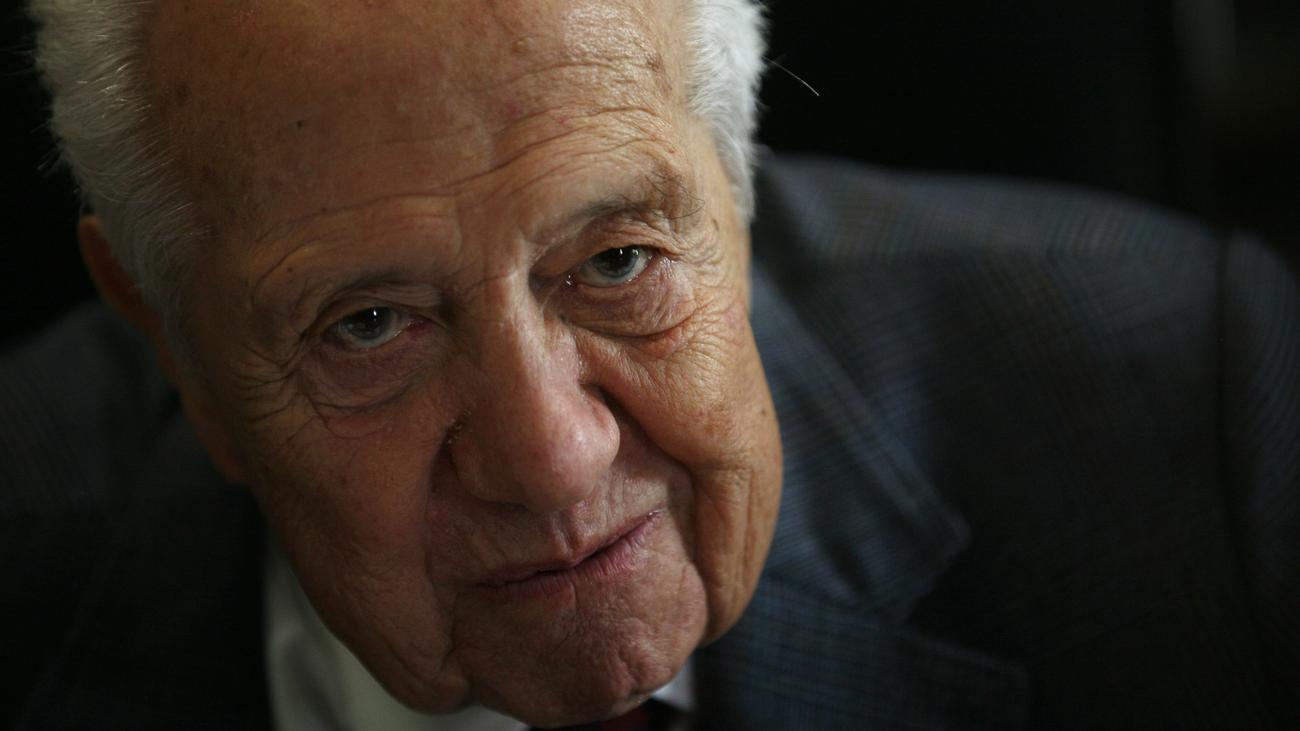 Nach schwerer Krankheit ist Portugals Ex-Präsident Mário Soares
Nach schwerer Krankheit ist Portugals Ex-Präsident Mário Soares
 DALLAS —
DALLAS — 
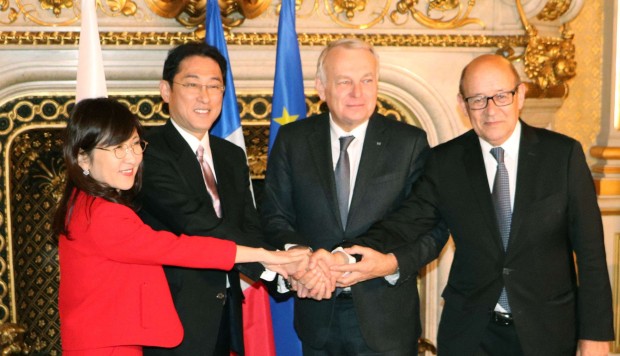 The defence and foreign ministers of Japan and France agreed at their “two-plus-two” meeting on Friday to start negotiations for a bilateral accord on sharing defence supplies and services. In a joint statement issued after the meeting in Paris, the ministers also expressed opposition to “unilateral action that would raise tensions” in the South China Sea, a reference apparently to China’s land reclamation and other activities in the contested waters symbolizing its growing assertiveness. The third meeting of the kind between the two countries involved Japanese Defence Minister Tomomi Inada and Foreign Minister Fumio Kishida and French Defence Minister Jean-Yves Le Drian and Foreign Minister Jean-Marc Ayrault. Under the envisioned acquisition and cross-servicing agreement, Japan’s Self-Defence Forces and the French military would provide each other with supplies, such as water and food, and services, including equipment transportation and repair work. Ayrault said at a press briefing that France and Japan have taken a new step in defence cooperation and will be able to further collaborate on humanitarian assistance and UN peacekeeping operations. Kishida told reporters that Japan and France will seek to finalize the acquisition and cross-serving agreement “at the earliest time possible”. Japan already has such agreements with the United States and Australia, and is negotiating similar accords with Britain and Canada, all part of Tokyo’s effort to expand defence cooperation with other countries. It is also considering a similar deal with New Zealand. In the joint statement, the ministers called on all parties that have stakes in the sea to respect their obligations under international law and refrain from reclaiming land, building outposts on it or using them for military purposes. On the basis of a bilateral defence equipment development accord that went into force last year, they also confirmed their governments’ intention of turning joint research into undersea drones that search for mines into concrete form. Regarding the humanitarian crisis in Syria, Kishida unveiled a Japanese plan to provide US$240 million to surrounding countries for refugee assistance. Japan and France last held a “two-plus-two” meeting between their defence and foreign ministers in March 2015. The next meeting is expected to be held in Tokyo in 2018.
The defence and foreign ministers of Japan and France agreed at their “two-plus-two” meeting on Friday to start negotiations for a bilateral accord on sharing defence supplies and services. In a joint statement issued after the meeting in Paris, the ministers also expressed opposition to “unilateral action that would raise tensions” in the South China Sea, a reference apparently to China’s land reclamation and other activities in the contested waters symbolizing its growing assertiveness. The third meeting of the kind between the two countries involved Japanese Defence Minister Tomomi Inada and Foreign Minister Fumio Kishida and French Defence Minister Jean-Yves Le Drian and Foreign Minister Jean-Marc Ayrault. Under the envisioned acquisition and cross-servicing agreement, Japan’s Self-Defence Forces and the French military would provide each other with supplies, such as water and food, and services, including equipment transportation and repair work. Ayrault said at a press briefing that France and Japan have taken a new step in defence cooperation and will be able to further collaborate on humanitarian assistance and UN peacekeeping operations. Kishida told reporters that Japan and France will seek to finalize the acquisition and cross-serving agreement “at the earliest time possible”. Japan already has such agreements with the United States and Australia, and is negotiating similar accords with Britain and Canada, all part of Tokyo’s effort to expand defence cooperation with other countries. It is also considering a similar deal with New Zealand. In the joint statement, the ministers called on all parties that have stakes in the sea to respect their obligations under international law and refrain from reclaiming land, building outposts on it or using them for military purposes. On the basis of a bilateral defence equipment development accord that went into force last year, they also confirmed their governments’ intention of turning joint research into undersea drones that search for mines into concrete form. Regarding the humanitarian crisis in Syria, Kishida unveiled a Japanese plan to provide US$240 million to surrounding countries for refugee assistance. Japan and France last held a “two-plus-two” meeting between their defence and foreign ministers in March 2015. The next meeting is expected to be held in Tokyo in 2018.
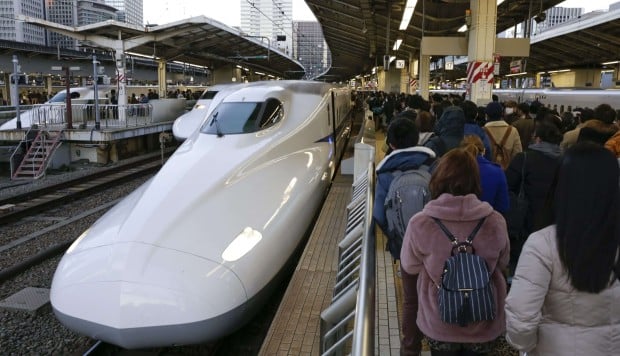 Famously efficient, punctual and clean, Tokyo’s subway and train systems transport 40 million passengers around the metropolis every day. But they have become victims of their own success and are now equally notorious for being overcrowded. Tokyo Governor Yuriko Koike has called in outside experts in an effort to devise solutions to the problem of jam-packed carriages in the city, a problem in particular for millions of commuters going to and from work during the peak rush hours. Addressing the Tokyo Metropolitan Assembly in September, Koike said: “Commuting in overcrowded trains could be slowing society’s momentum.” According to statistics collated by the transport ministry, average capacity at the busiest times of the day in Tokyo came to 164 per cent in 2015, a level that has been steady for around 15 years. That figure – which denotes the additional amount of passengers above the ideal benchmark set by the ministry per carriage – is a significant improvement on the 1970s, when it came to 221 per cent, but still makes commuting a daily test of endurance for millions of men and women. Simply adding more trains to the timetable is not considered a viable plan as trains on the busiest routes already run every couple of minutes at peak periods, while adding carriages to existing trains would require extensive modernisation work at many stations to make platforms longer. One solution that Koike has put forward would be to introduce double-decker trains, which are already in operation on many long-distance Shinkansen and in limited numbers as first-class carriages on lines that transit the capital. Train operators have warned, however, that instead of easing congestion, carriages with an upper and lower levels might instead cause additional delays because the only access doors are at each end of the carriage and it takes a lot longer for passengers to embark and disembark than for conventional carriages with four or six doors. For trains on the most congested lines – such as the Yamanote, which runs as a loop around central Tokyo, and the Chuo Line – that would simply be unworkable, the industry said. Koike is taking advice from Hitoshi Abe, the president of transport consultancy LightRail, who has an alternative plan for double-decker carriages. The plan, the newspaper reported, is to have two levels but no connecting stairs. Instead, each level would have doors that would open on a two-storey platform, providing quicker and more efficient access. Renovating stations to accommodate the new carriages would be expensive, Abe admitted, but would still be a lot cheaper than constructing new elevated tracks over existing lines to meet demand. An even simpler solution would be to encourage companies to permit employees to work from home at least a couple of days a week, or to allow them to work at times other than those around the traditional rush hours.
Famously efficient, punctual and clean, Tokyo’s subway and train systems transport 40 million passengers around the metropolis every day. But they have become victims of their own success and are now equally notorious for being overcrowded. Tokyo Governor Yuriko Koike has called in outside experts in an effort to devise solutions to the problem of jam-packed carriages in the city, a problem in particular for millions of commuters going to and from work during the peak rush hours. Addressing the Tokyo Metropolitan Assembly in September, Koike said: “Commuting in overcrowded trains could be slowing society’s momentum.” According to statistics collated by the transport ministry, average capacity at the busiest times of the day in Tokyo came to 164 per cent in 2015, a level that has been steady for around 15 years. That figure – which denotes the additional amount of passengers above the ideal benchmark set by the ministry per carriage – is a significant improvement on the 1970s, when it came to 221 per cent, but still makes commuting a daily test of endurance for millions of men and women. Simply adding more trains to the timetable is not considered a viable plan as trains on the busiest routes already run every couple of minutes at peak periods, while adding carriages to existing trains would require extensive modernisation work at many stations to make platforms longer. One solution that Koike has put forward would be to introduce double-decker trains, which are already in operation on many long-distance Shinkansen and in limited numbers as first-class carriages on lines that transit the capital. Train operators have warned, however, that instead of easing congestion, carriages with an upper and lower levels might instead cause additional delays because the only access doors are at each end of the carriage and it takes a lot longer for passengers to embark and disembark than for conventional carriages with four or six doors. For trains on the most congested lines – such as the Yamanote, which runs as a loop around central Tokyo, and the Chuo Line – that would simply be unworkable, the industry said. Koike is taking advice from Hitoshi Abe, the president of transport consultancy LightRail, who has an alternative plan for double-decker carriages. The plan, the newspaper reported, is to have two levels but no connecting stairs. Instead, each level would have doors that would open on a two-storey platform, providing quicker and more efficient access. Renovating stations to accommodate the new carriages would be expensive, Abe admitted, but would still be a lot cheaper than constructing new elevated tracks over existing lines to meet demand. An even simpler solution would be to encourage companies to permit employees to work from home at least a couple of days a week, or to allow them to work at times other than those around the traditional rush hours.
 Japan says it is “watching very closely” the actions of the Chinese delegation to an international maritime organisation after it accepted Chinese names for undersea features that have previously been surveyed and named by Tokyo and are near its exclusive economic zone. An official for the Ministry of Foreign Affairs in Tokyo told that the applications do not, at present, “directly affect the interests of nearby maritime nations” but some officials have described Beijing’s moves as “aggressive” and accused China of “seeking to assume control over territory”. The Sub-Committee on Undersea Feature Names (SCUFN), which comes under the International Hydrographic Organisation and is based in Monaco, received 50 applications from the State Administration of China in 2016 to name undersea features, including sea mounts and ridges. The organisation released its annual report on December 21, in which it said 16 of the applications in the Pacific had been accepted while 34 were not. The newspaper reported that the sub-committee rejected most of the names because “naming them in Chinese may develop into disputes with coastal countries”. Among the applications that were turned down were eight close to the Southern Kyushu-Palau Ridge Region, which runs south from Okinotorishima, Japan’s most southerly island, towards Palau to the south. At least two of the sites that China sought to name lie in an area that Japan applied to exercise sovereignty over to the United Nations commission examining nations’ applications to claim continental shelf territory. In 2014, the panel delayed a decision on Tokyo’s application for the region, which covers 252,000 sq km to the east of the Philippines and borders Palau’s EEZ. Six of the features that China applied to name appear to fall within Palau’s waters. Earlier this year, the Foreign Ministry in Beijing said Japan’s claim to the region is “illegal” and China does not recognise the EEZ or continental shelf claims of the Okinotori. In 2012, SCUFN approved Chinese names for three undersea features some 450km from Miyakojima Island, in Okinawa Prefecture. Japan’s EEZ stretches 370km from Miyakojima. The ministry in Tokyo has emphasised that China has sought to name features that are in international waters and is therefore free to conduct such research. It is clear, however, that Japan is concerned at what is seen as a pattern of assumption of territories in the region and Beijing’s failure to cooperate – or even communicate – with Japan on surveys of the area. The features close to Japan’s EEZ have previously been surveyed and have Japanese names. “This sub-committee sits for the purpose of selecting names for features so they can be standardised for academic purposes,” the official said. “Naming does not directly affect the interests of other maritime nations, although we are watching the situation closely.” But Yoichi Shimada, a professor of international relations at Fukui Prefectural University, says Japan needs to make its concerns heard very clearly and that the foreign ministry is “too anxious about not provoking China to stand up for Japan”. “This sort of aggression by the Chinese is nothing new,” he said “They have made many claims against remote islands in the region and this is just the latest example … Japan needs to protest any such move because failing to do so is only going to cause more and bigger problems in the future.” China is aware of the competition for undersea resources and rights, but naming features is “a common practice of the world’s maritime powers”, the Xinhua news agency said. Over the past six years, China has successfully had 76 names approved, including the 16 in 2016. Among the 50 Chinese proposals this year, 21 features are in the controversial nine-dash line, with which Beijing claims most of the South China Sea. The line had been declared by an international arbitration tribunal in Hague as invalid in July, a month before China’s submission. According to the SCUFN regulations, naming a feature does not necessarily give the namer any rights to it, since any country can apply names to an unnamed feature in international waters. But the regulations also ask other countries to recognise a name applied by a sovereignty state within its territorial sea. “Naming the undersea features … reflects the potential rights China has to these features,” a maritime expert Yang Suihua was quoted by Xinhua as saying.
Japan says it is “watching very closely” the actions of the Chinese delegation to an international maritime organisation after it accepted Chinese names for undersea features that have previously been surveyed and named by Tokyo and are near its exclusive economic zone. An official for the Ministry of Foreign Affairs in Tokyo told that the applications do not, at present, “directly affect the interests of nearby maritime nations” but some officials have described Beijing’s moves as “aggressive” and accused China of “seeking to assume control over territory”. The Sub-Committee on Undersea Feature Names (SCUFN), which comes under the International Hydrographic Organisation and is based in Monaco, received 50 applications from the State Administration of China in 2016 to name undersea features, including sea mounts and ridges. The organisation released its annual report on December 21, in which it said 16 of the applications in the Pacific had been accepted while 34 were not. The newspaper reported that the sub-committee rejected most of the names because “naming them in Chinese may develop into disputes with coastal countries”. Among the applications that were turned down were eight close to the Southern Kyushu-Palau Ridge Region, which runs south from Okinotorishima, Japan’s most southerly island, towards Palau to the south. At least two of the sites that China sought to name lie in an area that Japan applied to exercise sovereignty over to the United Nations commission examining nations’ applications to claim continental shelf territory. In 2014, the panel delayed a decision on Tokyo’s application for the region, which covers 252,000 sq km to the east of the Philippines and borders Palau’s EEZ. Six of the features that China applied to name appear to fall within Palau’s waters. Earlier this year, the Foreign Ministry in Beijing said Japan’s claim to the region is “illegal” and China does not recognise the EEZ or continental shelf claims of the Okinotori. In 2012, SCUFN approved Chinese names for three undersea features some 450km from Miyakojima Island, in Okinawa Prefecture. Japan’s EEZ stretches 370km from Miyakojima. The ministry in Tokyo has emphasised that China has sought to name features that are in international waters and is therefore free to conduct such research. It is clear, however, that Japan is concerned at what is seen as a pattern of assumption of territories in the region and Beijing’s failure to cooperate – or even communicate – with Japan on surveys of the area. The features close to Japan’s EEZ have previously been surveyed and have Japanese names. “This sub-committee sits for the purpose of selecting names for features so they can be standardised for academic purposes,” the official said. “Naming does not directly affect the interests of other maritime nations, although we are watching the situation closely.” But Yoichi Shimada, a professor of international relations at Fukui Prefectural University, says Japan needs to make its concerns heard very clearly and that the foreign ministry is “too anxious about not provoking China to stand up for Japan”. “This sort of aggression by the Chinese is nothing new,” he said “They have made many claims against remote islands in the region and this is just the latest example … Japan needs to protest any such move because failing to do so is only going to cause more and bigger problems in the future.” China is aware of the competition for undersea resources and rights, but naming features is “a common practice of the world’s maritime powers”, the Xinhua news agency said. Over the past six years, China has successfully had 76 names approved, including the 16 in 2016. Among the 50 Chinese proposals this year, 21 features are in the controversial nine-dash line, with which Beijing claims most of the South China Sea. The line had been declared by an international arbitration tribunal in Hague as invalid in July, a month before China’s submission. According to the SCUFN regulations, naming a feature does not necessarily give the namer any rights to it, since any country can apply names to an unnamed feature in international waters. But the regulations also ask other countries to recognise a name applied by a sovereignty state within its territorial sea. “Naming the undersea features … reflects the potential rights China has to these features,” a maritime expert Yang Suihua was quoted by Xinhua as saying.
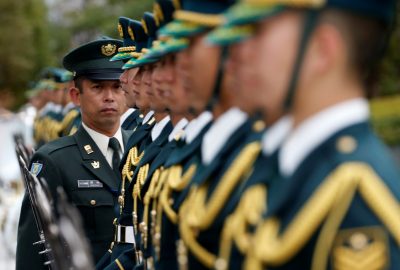 As a freely accessible resource for the region, East Asia Forum relies on donations from those who believe in its importance. More information.
As a freely accessible resource for the region, East Asia Forum relies on donations from those who believe in its importance. More information. 
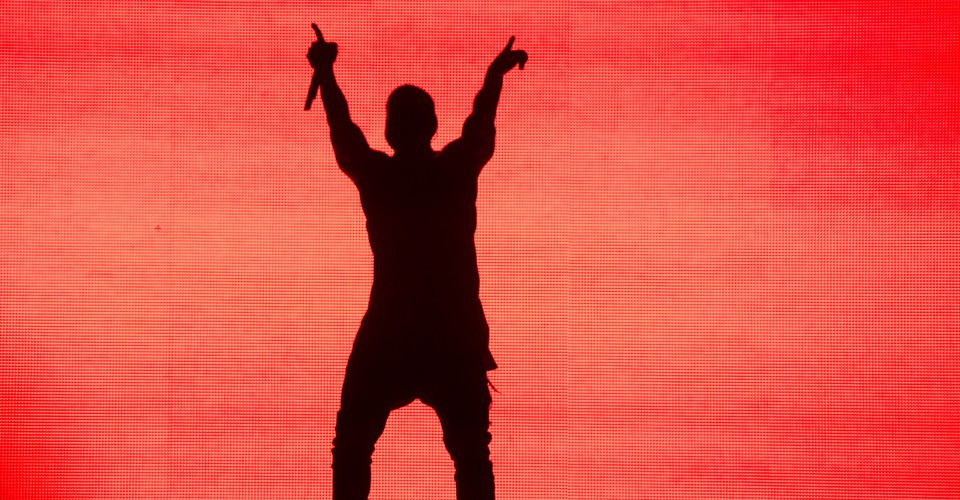 Kanye West’s Year of Breaking Bad
Kanye West’s Year of Breaking Bad 
 BRISBANE, Australia —
BRISBANE, Australia — 
 The government of Shinzo Abe recently announced record increases in military spending, citing China’s continued claim over disputed territories in the South China Sea and North Korea’s undeterred missile threats and tests.
The government of Shinzo Abe recently announced record increases in military spending, citing China’s continued claim over disputed territories in the South China Sea and North Korea’s undeterred missile threats and tests. 

